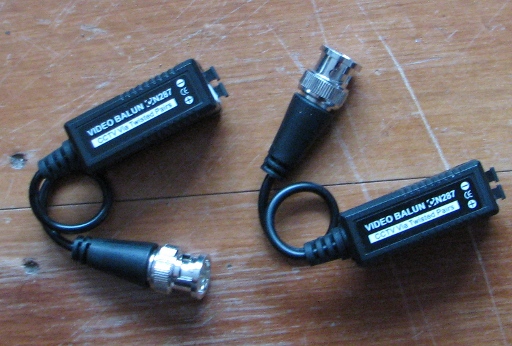Sending Video through the Tether
Transmitting a video signal over a long cable can be problematic. If the cable is too long the video signal can deteriorate and be lost. In the Security Surveillance industry active and passive Baluns are used to get around this problem and increase the distance the signal can be sent. Because there is an entire industry dealing with this problem there are a great number of different types of Baluns on the market. Active baluns boost the signal strength as well as doing the balance / unbalance process on the signal to minimise the loss (as I understand it). Active baluns are used for cable distances in excess of 100m and can also send HDMI signals. Passive baluns only do the balance / unbalance process on the signal and so are suitable for shorter lengths and lower resolution video.
For the needs of the ROV with the 100m CAT5e tether, passive baluns are suitable. This has been tested using the Horyzon V3 FPV camera and sending the video feed that would be used for piloting the ROV over the 100m tether to a small video monitor. The image was clear and in full colour.

Passive Baluns. The BNC Connectors will probably be removed.
The image below outlines how the video components are connected. The trigger connections to the Arduino are not shown on this diagram but can be found on this page. Please click on the image for a larger image.
